Black jeans will forever be a fashion favourite among men and women alike. They can be worn with virtually every colour and be dressed up or down, meaning they are a great choice for a wide variety of occasions.
It’s frustrating when you pull your pair of jeans out of the wash only to notice they’re covered in white marks. While the appearance of these markings may seem a mystery, various factors may be causing the issue. So what causes white streaks on black jeans?
In this article, we’ll go into detail about each of the potential causes of these white streaks.
You will also learn how to restore your jeans to their original colour and prevent the same problem from occurring again.
Why Are There White Streaks on Your Jeans?
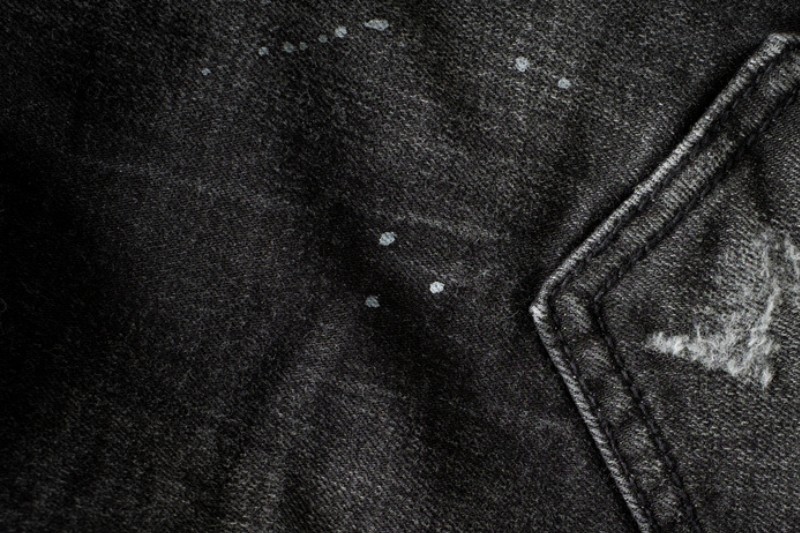
When your black jeans come out of the wash covered in white streaks, it can be extremely frustrating and confusing. Although these marks seemingly appear out of nowhere, there are a number of possible underlying causes that can be resolved.
The main causes of these white streaks are:
- Undissolved laundry detergent
- Hard water deposits
- Fading fabric dye
Each of these is covered below, as well as details on how to prevent the issue in the future.
Cause 1: Undissolved laundry detergent
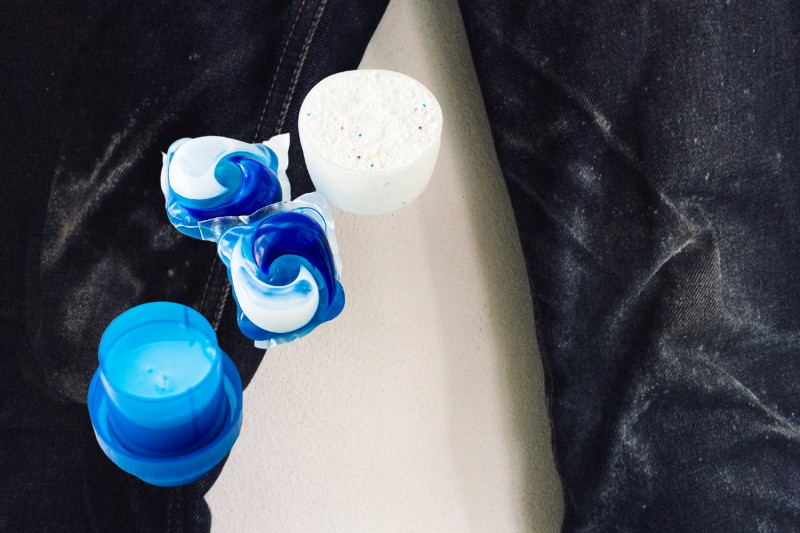
The most likely cause of the white marks on your jeans is undissolved laundry detergent.
When too much detergent is added to your washer, there isn’t enough water in the drum to fully dissolve it during the wash cycle. This means that traces of the detergent are left behind on your clothing, resulting in unsightly white streaks.
The solution
The easiest way to combat this is to ensure you always use the correct amount of laundry detergent. This amount will vary depending on your brand of detergent and the size of your laundry load, so check the product directions on your detergent for the best results.
We also recommend cleaning out your detergent dispenser to remove any past build-up from your machine. This can be done in the following way:
- Add 120ml of distilled white vinegar to a large bowl of hot water
- Remove your dispenser drawer from your washing machine and place it in the bowl
- Allow the drawer to soak for a few minutes before scrubbing away any residue
- Rinse the drawer in clean water and wipe it dry before returning it to the machine
Cause 2: Hard water deposits
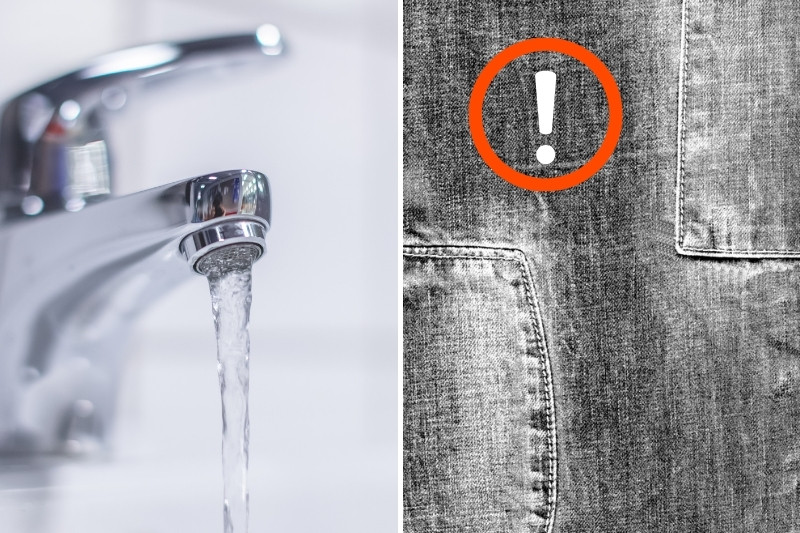
If you live in a hard water area, limescale is another possible culprit of the white streaks. The minerals found in your water supply will slowly cause a build-up of hard water deposits in the pipes, drum, and inner components of your washer.
This will eventually leave a white residue on your clothing and make your machine less efficient.
The solution
To remove these mineral deposits, you will need to descale your washing machine. This can be done in a variety of ways, but the easiest is to buy sachets of washing machine descaler.
These can be added to your machine in place of detergent and run on a 60°C wash cycle to break down any deposits effectively.
Once you are sure your washing machine has been thoroughly descaled, you can use distilled white vinegar to prevent future build-ups from occurring.
Simply add 60 ml of white vinegar to your fabric softener dispenser every now and then when running your normal wash cycle. Unfortunately, this can void some warranties, so be sure to check with your manufacturer before going ahead.
Cause 3: Fading fabric dye
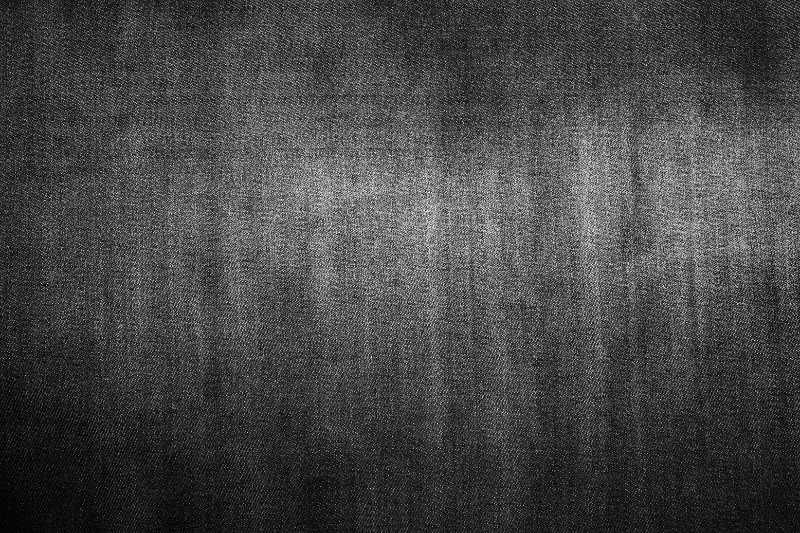
The last potential cause of the white streaks on your jeans is fading. This is more common on an older pair of black jeans but could also occur on a newer pair if a cheap fabric dye was used. Although most dyes look the same, some will be more fade-resistant than others.
When jeans begin to fade, it is common for white lines to appear in the areas where they are most creased or worn. For example, fading often occurs around the knees, groin area, and in the back.
The solution
If you’re worried about your jeans fading, we suggest washing them in cold water, as this will reduce the amount of dye transfer that occurs.
You can also try adding 1/4 cup of salt to the drum when washing your black jeans. This will need to be dissolved first if you’re using a cold wash cycle.
How to Get White Streaks Out of Black Jeans
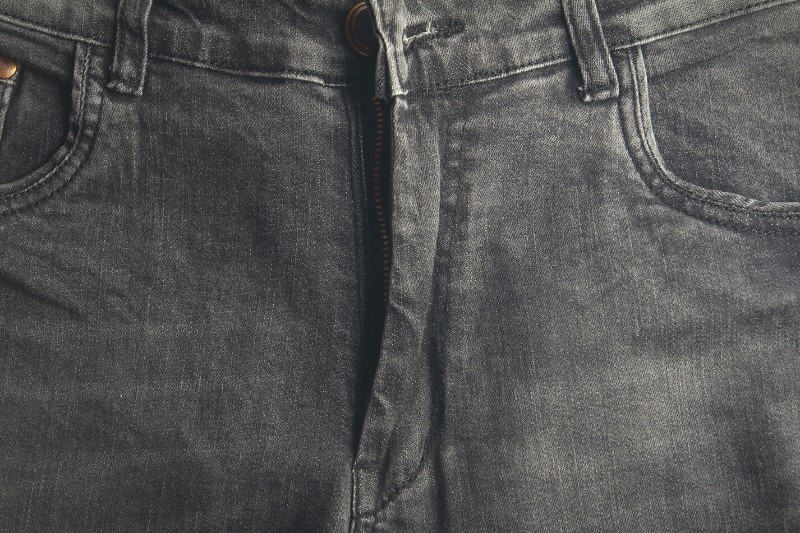
No matter the cause of the white streaks on your jeans, it is possible to remove them. The methods needed to treat either issue and restore your jeans to their original state can be found below.
You will first have to determine which of the causes listed above is at the root of your problem.
The easiest way to do this is to lightly scratch at one of the white streaks using your finger.
If some of the marks can be rubbed away, then you’re likely dealing with undissolved laundry detergent or hard water deposits. If not, then the issue will be caused by fading dye.
Method 1: Treating laundry detergent marks and hard water deposits
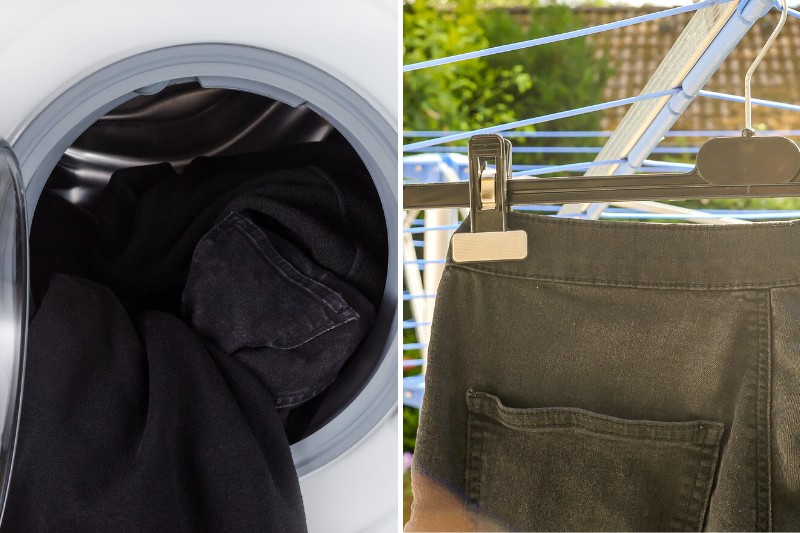
If the white streaks on your black jeans are caused by undissolved laundry detergent or hard water deposits, they can be washed away.
Although the marks can simply be rinsed in clean water for a quick fix, we highly suggest re-washing them for the best results.
The safest way to wash a pair of black jeans in a washing machine is as follows:
- Empty the pockets and ensure any zips or buttons on your jeans are fastened. Then, turn the pair of jeans inside out to help prevent fading and place in the machine drum.
- Add a small amount of detergent to the dispenser drawer. Make sure you use the amount suggested on the detergent label to prevent more marks from appearing.
- Select a gentle or hand wash cycle and ensure the water temperature is set to 40°C or less.
- Allow the wash cycle to run before taking your jeans out of the machine.
- Hang up the jeans on a clothesline or indoor airer and leave them to dry OR put the jeans in your tumble dryer on a low heat setting. Always remove your jeans from the dryer while they are still damp, and hang them up to finish drying.
Method 2: Treating signs of fading
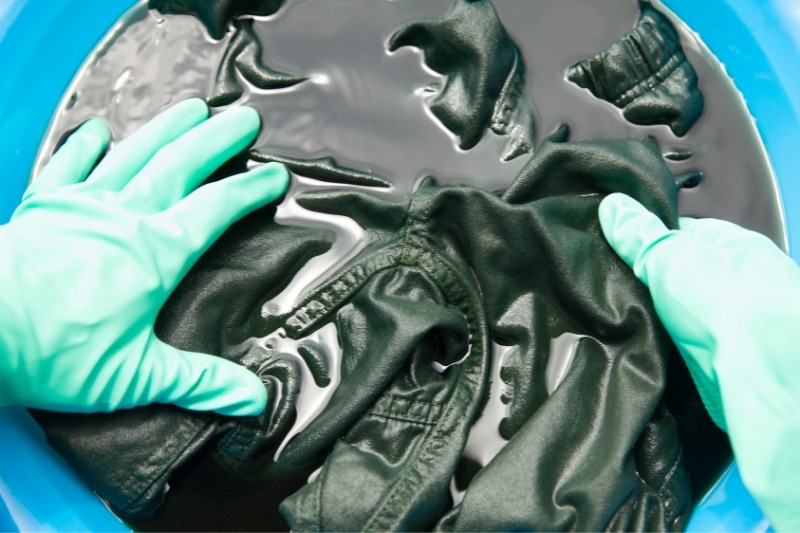
When the white streaks on your jeans are due to fading, there is nothing you can do to remove these marks from the garment. Instead, you will have to re-dye your jeans to restore their original streak-free condition.
Bottles of black fabric dye can be purchased from plenty of online retailers or craft stores. Make sure you find a colour you like and read the product label before following the below instructions:
- Pre-wash your jeans to remove any dirt and grime. Meanwhile, lay a plastic tablecloth over your work surface to protect from any accidental spillages.
- Fill a large bucket with 11.5 litres of hot water. Ideally, the water needs to be 60°C, so you may have to use your kettle to increase the temperature if your hot water tap isn’t enough.
- Add one cup of salt and 5 ml of washing up liquid to the bucket and stir until they are evenly distributed.
- Put on a pair of gloves to protect your hands while working with the dye.
- Shake the dye bottle and pour some of the liquid into the bucket. For the darkest possible colour, you will need to use the whole bottle, but this isn’t always necessary.
- Dip a paper towel into the dye mixture to test the colour. Add more dye if the colour is too pale, or add more water if it is too dark.
- Remove your jeans from the washing machine and place them in the bucket of dye. Stir the mixture continuously for 20 minutes to ensure an even colour distribution.
- Give the mixture another stir every 10 minutes or so until your desired colour is reached. This should take no more than an hour, but remember the dye will become lighter once your jeans have dried.
- Remove your jeans from the dye bath and squeeze out any excess liquid. Then, rinse the fabric in cold water until it begins to run clear.
- Place the jeans back in your washing machine on a warm wash cycle. Do not wash them with any other garments as the dye will run in this initial wash.
- Remove your jeans from the wash and hang them up to air dry.

Hannah has a passion for cleaning. She worked her way around Australia by cleaning hostels in exchange for free accommodation and used her cleaning skills to bag a job as a chalet host for a luxury ski company in France.






